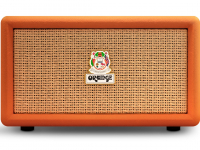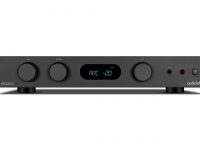For many years CES has stood as the benchmark for game-changing technology reveals, and this year’s show continues the trend…
Celebrating its 50th anniversary in 2017, the Las Vegas-based show is set to attract over 165,000 attendees before the doors close for the final time this Sunday, 8th January.
From IoT specialists (Internet of Things) and startups, to 3D printing and robotics, some 3,800 companies will be exhibiting their wares. With so much going on sometimes it’s difficult to pick out the real headlines. With this in mind, we’ve hand-picked some of the biggest news stories from the home audio-visual entertainment camp.
Over the years CES has introduced VCR technology (1970), CD players (1980), DVDs (1995) and HD TVs (1999), before moving on this century with Blu-ray (2003), OLED TVs (2008) and the breakthrough in Hi-Res Audio (2016). Not all formats stuck around for too long however, with the likes of Laserdisc (1974) and 3D HDTV (2009) falling short of expectations.
This year sees some manufacturers stepping in where others ventured last year (OLED TVs, Dolby Atmos soundbars & 4K Blu-ray players), while in other areas we’ve seen a complete new technology of TV be revealed. (You’ll have to read on to find out about that one – but to give you a clue, QLED isn’t a typo!)
LG makes big waves with its new ranges.
The brand new Atmos-enabled soundbar, the SJ9, picks up where the likes of Samsung and Yamaha ventured in 2016. Dolby Atmos is the latest generation of surround sound, firing sound from both around and above you. Soundbars work in a “reflective” way, bouncing sound off both the side & rear walls, and the ceiling – creating a sound bubble to completely immerse you in your entertainment.
This model aims to focus as much on music as it does movies, and supports Hi-Res Audio. It will also upsample to 24bit/192kHz, to really get the most out of your existing music collection. Speaking of which, Chromecast built in means seamless audio streaming from your phone or tablet. Back on the video side of things, it will support 4K passthrough, which will be ideal to pair up with…
…LG’s first 4K Blu-ray player, the UP970. To compliment the latest image standards of its TV range, the Blu-ray player will support both Dolby Vision and HDR10. This means you will be able to get the most amount of vibrancy and colour range from your brand new 4K Blu-rays possible.
The main buzz coming from the LG camp this year is in the big-money development of its OLED range. This year’s flagship will be called the ‘W’ series. The W (or Wallpaper, or maybe even Window?) OLED model is just 2.57mm thick, and will be available in both 65″ & 77″ sizes. LG’s OLED will have the greatest format compatibility on the market, ticking the Dolby Vision & HDR10 boxes, as well as (new for 2017) HLG and Advanced HDR by Technicolor. The former is the format the BBC recently used for its Planet Earth II 4K HDR test broadcast, so very useful to have onboard. LG will expand its 2017 OLED TV range with the four other models, two of which will feature integrated soundbars.
From the slightly more off-the-wall end of the scale, LG also announced its double-sided UHD OLED displays, and a 55in HD transparent OLED display. If that’s what you’ve been waiting for then you’ll soon be in luck!
Sony turns the entire TV into one giant speaker.
The news is this year Sony will once again be venturing into the world of OLED. Its flagship screen in 2017 will be the Sony Bravia OLED A1. Available in sizes between 55 and 77″, there will be a TV to fill most rooms, (unless 77″ just isn’t big enough for you… then you’ll be pleased to hear about the €20,000 ultra-short throw projector, mentioned below). Sony have decided to support Dolby Vision HDR, which will start to appear on 4K Blu-ray discs sometime in the first half of this year.
Sony have broken the mould somewhat with this TV in the sound department. The Acoustic Surface system is a driver-free solution that turns the entire TV screen into a speaker. By vibrating the panel the sound comes direct from the same point as the picture, to make it sound far more natural. This also does away with larger, deeper speakers that require a certain amount of cabinet space to be able to produce the sound. This kind of technology isn’t new – however to feature this on a high-end model by one of the world’s biggest brands, we are very excited to see (and hear) how well this works.
In other news, Sony has also been working on its LCD panel TVs for 2017. The flagship LED TV is the XE94, a full-array backlight screen. The exciting thing about this will be its ability to completely disable the backlighting in areas of the screen, giving far greater dynamics in brightness, and less banding and light bleed than traditional edge-lit LED TVs.
Hot on the heels of Panasonic & Samsung, Sony also announced its first 4K Blu-ray player, the UBPX800. Sony focused its attention on the player’s 4K upscaling capabilities, but also mentioned 24bit Hi-Res Audio support and Bluetooth headphone/wireless speaker connection – once again catering for the music fan as well as the movie buff. Separate audio and video signal paths are also used to get the best possible sound quality, similar to Panasonic’s method in its 2016 4K Blu-ray players.
Completing the home cinema range for Sony’s 2017 CES display is the HT-ST500 Atmos-enabled soundbar. Similar to LG’s Atmos soundbar, it will support both Chromecast & Bluetooth to ensure all your home entertainment requirements are catered for.
Quantum dot light emitting diode – or “…Wow!” for short.
With Sony joining Panasonic and LG this year in the OLED TV boat, Samsung appear to be missing a trick… until now. Not happy to rest on its laurels, Samsung have announced its new QLED TVs. The South Korean company claim this new technology has all the benefits of OLED, but none of the drawbacks.
Samsung’s SUHD range of Quantum dot TVs use traditional backlighting, with a film of nano-filters to create the colour spectrum. QLED takes the same nano-dot principle, but instead of traditional backlighting, each pixel is self-emitting. This means (in theory) QLED is capable of displaying the same pure blacks as OLED. Samsung claim that its 2017 QLED range is able to far surpass the brightness of OLED (540nits brightness for Ultra HD Premium certification) and reach a whopping 2000nits peak brightness. Samsung will have 3 models in the range; the flagship Q9, Q7 and the curved Q8.
Panasonic push its technology in the same direction as 2016.
It certainly appears to be a case of “if it ain’t broke, make it better” from the product development team at Panasonic. Having released a stunning range of TVs in 2016, this year will see the release of the EZ1002, Panasonic’s flagship OLED TV. As expected, we’ll see support for Dolby Vision HDR, as well as the new HLG (Hybrid Log Gamma) HDR format.
After Samsung’s recent acquisition of Harman Kardon, it also comes as no surprise Panasonic bring out its heavyweight audiophile guns with the Technics brand. The EZ1002 TV will feature Dynamic Blade Speakers, tuned by Technics to ensure the very best sound quality for the in-built speakers.
One of Panasonic’s big success stories in 2016 was its impressive 4K Blu-ray player range, the first of which (DMPUB900) won a Product of the Year badge at the What Hi-Fi? Awards. Panasonic will certainly hope to continue this trend with 3 more players in 2017, the DMPUB400, DMPUB310 and DMPUB300. They will all be “8K proof” (a term that should be taken with a pinch of salt, as no official broadcast or distribution standards have been established yet), have Hi-Res Audio support, impressive 4K mp4 video network playback and feature Panasonic’s Hollywood Laboratory’s HCX processor – originally seen in the 2016 range. The top of the (new) range ’UB400 will also feature Hi-Res Audio processing that aims to replicate the warm sound of traditional valve-powered hi-fi.
In other news…
The official “big 4 alternative”, Hisense aims to shake up the proceedings once more, with the world’s first 4K Laser Cast TV. The name is deceptive though, as this is actually a projector/surround sound system that comprises a ultra-short throw projector, 100″ screen & 5.1 system. This can be yours for the predicted price of $13,000. If you’re looking to spend even more, Sony have released its very first 4K HDR ultra-short throw projector, the VPL-VZ1000ES. Just don’t expect much change from €20,000!





